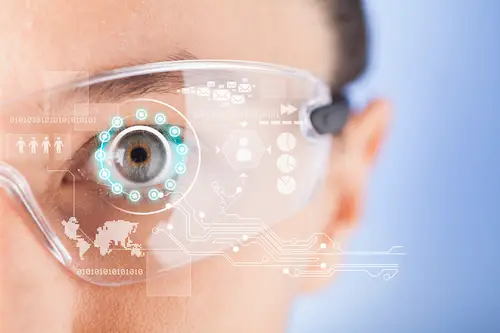Welcome to the future! The line between reality and the digital world is becoming progressively blurred, thanks to advanced technology. This post delves into one of the most compelling tech phenomenon shaping our lives today – Augmented Reality (AR). Considered a futuristic concept a few years ago, AR has now become an intrinsic part of many everyday experiences. From gaming to retail, healthcare to travel; augmented reality is revolutionizing industries by adding a layer of magic in our interaction with the real-world around us. But how does it work? What are its implications or benefits? Read on as we demystify “Augmented Reality Definition: Enhancing Real-World Experiences with Technology”. This article will help you comprehend not only what AR is but also how it promises to transform your day-to-day life in unimaginable ways. Prepare for an astonishing journey through this groundbreaking technology that’s changing perceptions and redefining realities.
The Concept and Evolution of Augmented Reality
Augmented Reality (AR) has revolutionized the way we interact with technology by overlaying digital information onto the physical world, blurring the line between the digital and real environments. The concept of AR has evolved from its early stages to become a powerful tool for enhancing real-world experiences across various industries, including gaming, education, healthcare, and commerce. By leveraging advanced sensors, cameras, and algorithms, AR applications can seamlessly integrate virtual elements into our physical surroundings, creating immersive and interactive experiences. The evolution of AR technology continues to push boundaries, enabling users to engage with digital content in unprecedented ways and offering endless possibilities for innovation and advancement in a rapidly evolving digital landscape.
Applications Of AR: Beyond Gaming and Entertainment
Beyond gaming and entertainment, augmented reality is making a significant impact in various industries. In the realm of education, AR is revolutionizing the way students learn by providing interactive and immersive lessons. In the field of healthcare, AR is being used for medical training, surgical procedures, and patient care, enhancing precision and efficiency. Moreover, in architecture and engineering, AR is enabling professionals to visualize and manipulate complex designs in real-time, leading to improved collaboration and decision-making. AR is also being harnessed in retail for virtual try-on experiences and enhancing customer engagement. These diverse applications highlight the transformative potential of augmented reality in enhancing real-world experiences across multiple sectors.
Limitations And Challenges Facing Augmented Reality Adoption
Despite the promising potential of augmented reality (AR), there are several limitations and challenges hindering its widespread adoption. One of the main obstacles is the high cost associated with developing AR applications and hardware. The technology also faces constraints in terms of battery life and processing power, limiting its usability for extended periods. Additionally, concerns around privacy and data security pose significant barriers to user acceptance. Furthermore, the need for accurate tracking and calibration in AR experiences can be difficult to achieve, resulting in less immersive or unreliable user interactions. Overcoming these challenges will be crucial for the successful integration of augmented reality into various industries and everyday life.
Future Prospects: How Will AR Transform Our Lives?
As augmented reality technology continues to evolve, its transformative impact on various aspects of our lives becomes increasingly apparent. In the near future, AR has the potential to revolutionize industries such as education, healthcare, retail, and entertainment. Imagine students being able to interact with historical figures in a virtual classroom or doctors performing surgeries with real-time AR guidance. Retail experiences could be enhanced with virtual try-on features and personalized recommendations. Furthermore, entertainment will reach new heights with immersive AR experiences that blur the lines between the real and virtual worlds. With these exciting prospects on the horizon, it’s clear that augmented reality will play a pivotal role in shaping our future experiences.
Case Studies on Successful Implementations of Augmented Reality
A number of case studies illustrate the successful implementation of augmented reality in various industries. One such example is the furniture retailer IKEA, which offers an AR app that allows customers to preview how products would look in their homes before making a purchase. This has not only increased customer engagement but also reduced returns. In the healthcare sector, surgeons have used AR technology to improve accuracy during complex procedures, leading to better patient outcomes. Additionally, museums have integrated AR experiences into their exhibits to provide interactive and educational content to visitors. These examples demonstrate the versatility and effectiveness of augmented reality in enhancing real-world experiences across different domains.

 Exploring the Latest Social Media Trends and How to Use Them
Exploring the Latest Social Media Trends and How to Use Them 10 Hidden iPhone Features You Didn’t Know Existed
10 Hidden iPhone Features You Didn’t Know Existed